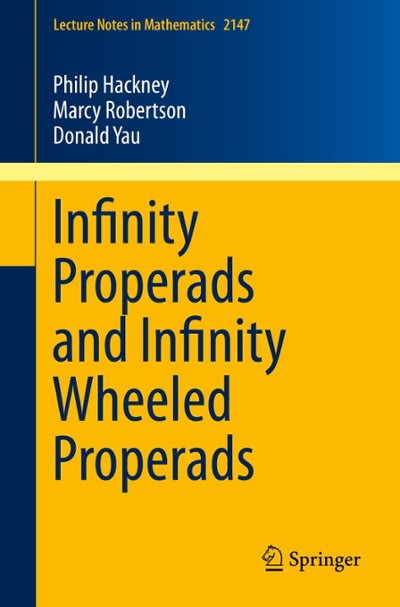Question
Investigation 4: Heart Disease A public health researcher is interested in some factors that influence heart disease. In a survey of 68 randomly selected localities,
Investigation 4: Heart Disease A public health researcher is interested in some factors that influence heart disease. In a survey of 68 randomly selected localities, he gathered data on the percentage of people in each locality who bike to work "Biking", the percentage of people in each locality who smoke "Smoking", and the percentage of people in each locality who have heart disease "Heart.Disease". The researcher wants to find which explanatory variable will be a better predictor of the response variable, "Heart.Disease". Investigate the relationship between the explanatory variables and response variable to help the researcher find the better predictor. The dataset is called "Heart Disease."
a) Display two separate scatterplots where each scatterplot will present one of the explanatory variables graphed with the response variable "Heart.Disease". Copy and paste the two scatterplots in your solutions document (use Graph Scatter Plot in StatCrunch). Appropriately title and label each graph.
b) Interpret the scatterplot of "Biking" and "Heart.Disease" using trend, strength, and shape (form) in one complete sentence.
c) Interpret the scatterplot of "Smoking" and "Heart.Disease" using trend, strength, and shape (form) in one complete sentence.
d) Calculate both correlation coefficients using Stat Summary Stats Correlation in StatCrunch. Each correlation will be calculated using one of the explanatory variables vs. the response variable "Heart.Disease". Provide both of these correlation coefficient values in your solutions document.
e) Which of the two explanatory variables would be the better predictor of "Heart.Disease"? Base your response on the scatterplots and the correlation coefficient. State your answer in one or two complete sentences including an explanation for your variable choice.
f) Using the "Biking" variable as the explanatory variable and "Heart.Disease" as the response variable, run a Simple Linear Regression analysis in StatCrunch. Use Stat Regression Simple Linear. Copy and paste only the StatCrunch results output at the top (do not include the tables).
g) Copy and paste the fitted line plot for "Biking" and "Heart.Disease" into your solutions document. This StatCrunch graph appears on page 2 of your StatCrunch output (i.e., click the right arrow at the bottom of your regression output to find the image).
h) Display the regression equation for "Biking" and "Heart.Disease" in context into your solutions document. You may copy and paste it from your output in part (f).
i) Interpret the slope of the regression line (in context of this data set) for "Biking" and "Heart.Disease".
j) Is it meaningful to interpret the y-intercept for "Biking" and "Heart.Disease"? Why or why not?
k) State r 2 (i.e., the coefficient of determination) for "Biking" and "Heart.Disease" and explain what this value means in context of the data set.
l) In one randomly selected location, the researcher found the biking rate was 70%. Use this information to predict the corresponding rate of heart disease in that location. Use the regression equation in part (h) to predict the rate of heart disease. Show the typed calculation in your solutions.
m) Was the prediction you made for the researcher in part (l) an example of extrapolation? Why or why not? Give your response in one to two complete sentences with an explanation.
n) Can we say that biking causes reduction in the heart disease rate? Why or why not? If you cannot, provide an example of a confounding variable. State these questions in one or two sentences.
Given data
| Locality: | Biking: | Smoking: | Heart.Disease |
| 1 2 3 4 5 6 7 8 9 10 11 12 13 14 15 16 17 18 19 20 21 22 23 24 25 26 27 28 29 30 31 32 33 34 35 36 37 38 39 40 41 42 43 44 45 46 47 48 49 50 51 52 53 54 55 56 57 58 59 60 61 62 63 64 65 66 67 68 | 35.26 51.83 52.94 48.77 26.17 10.55 60.51 45.25 48.6 25.14 44.17 61.15 27.27 49.53 46.61 28.62 21.13 68.57 41.68 69.88 70.69 60.28 16 39.68 12.89 35.02 64.07 61.15 22.67 49.73 35.48 59.46 31.7 14.24 15.14 39.91 13.73 5.47 48.78 61.36 64.17 2.98 69.99 65.96 19.37 58 32.48 39.25 8.52 37.18 70.7 68.21 31.71 28.57 60.03 18.95 24.73 74.91 10.53 74.21 74.51 56.21 11.66 6.3 60.59 56.15 74.22 25.44 | 23.28 14.44 25.07 11.02 6.65 5.99 3.98 2.14 10.39 5.84 3.97 27.78 16.85 15.25 9.25 12.48 18.94 1.8 13.07 17.35 22.71 15.11 19.89 10.27 25.21 22.66 28.47 2.19 28.74 3.49 15.85 18.81 23.19 26.72 3.28 19.72 14.22 16.08 27.75 17.96 19.04 3.84 20.26 3.51 6.12 16.4 25.25 15.34 29.95 22.36 19.06 15.32 28.75 16 11.37 13.95 25.6 5.7 14.96 22.59 22.52 19.25 26.73 19.44 8.17 28.35 26.08 13.2 | 12.1 6.43 8.61 6.72 10.6 14.08 3.22 6.59 6.66 11.48 7.98 7.72 12.16 8.03 6.81 11.37 14.83 0.68 9.09 4.26 2.71 4.95 15.37 9.54 16.27 12.52 7.29 3.52 16.78 5.07 11.37 5.69 12.54 17.37 12.73 8.89 14.3 17.62 9 4.95 6.06 15.16 3.69 2.72 11.54 5.72 13.19 10.39 17.86 10.5 2.83 4.48 13.02 12.07 5.07 13.47 13.72 1.09 15.58 4.3 4.3 6.51 17.47 17.76 4.94 10.16 4.63 12.36 |
Step by Step Solution
There are 3 Steps involved in it
Step: 1

Get Instant Access to Expert-Tailored Solutions
See step-by-step solutions with expert insights and AI powered tools for academic success
Step: 2

Step: 3

Ace Your Homework with AI
Get the answers you need in no time with our AI-driven, step-by-step assistance
Get Started


